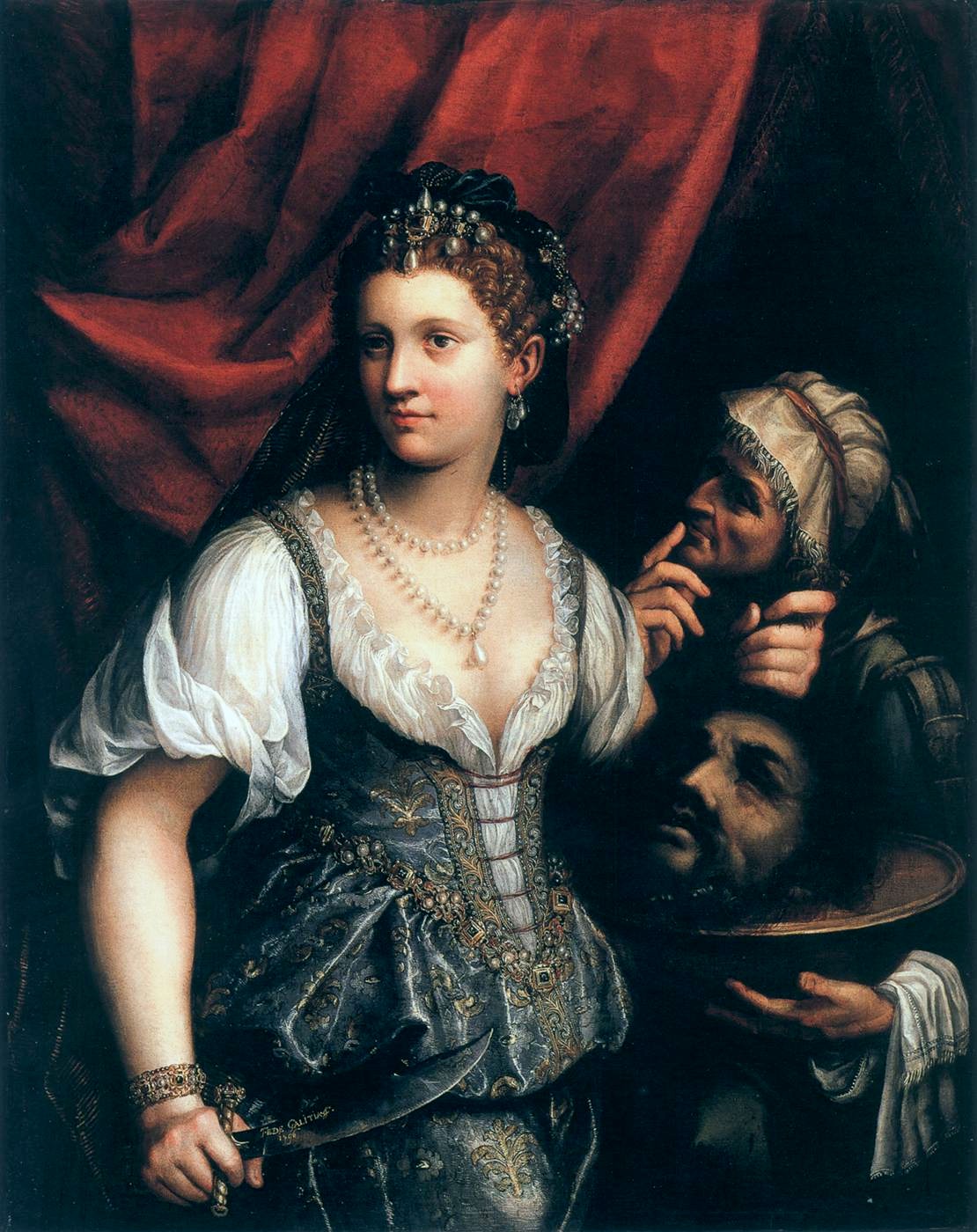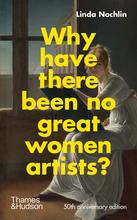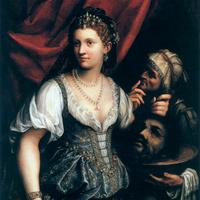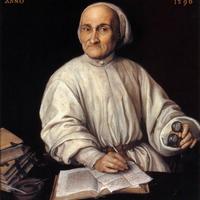More about Fede Galizia
- All
- Info
- Shop
Works by Fede Galizia

Contributor
Fede Galizia is, in my opinion, one of the absolute greatest painters, both in terms of technical ability and storytelling genius.
Alongside Lavinia Fontana and Barbara Longhi, Galizia was one of a series of female Renaissance artists who stand on the shoulders of their 16th-century predecessors: Sofonisba Anguissola, an acquaintance of Michelangelo, and Caterina van Hemessen. Other women who made artwork during the same period are Elisabetta Sirani, Artimisia Gentileschi, the engraver Diana Ghisi Scultori, the sculptor Luisa Ignatia Roldan, the miniaturist Levina Teerlinc, and the painters Marietta Robusti, Louise Moillon, Maria Sibilla Merian, and Josefa Ayala de Obidos. If anyone ever tells you, insinuates, hints, suggests, or indicates, before or after brunch or over coffee, that the Old Masters were mostly men, that person is wrong, a bunch of times over. Luckily being wrong can be an opportunity to broaden your opinion.
At this time people expected women to paint images without overt political meaning. Galizia's subjects are not shocking, but she tells a story in the still-lifes of fruit. A fruit is an image of domesticity, but the Biblical association with fruit in the Torah has to do with the Fall of Adam and Chava, anglicized as Eve. By taking the fruit, Chava and her other half entered the "matrix" space of material life. It was not the woman's "fault," because she was, originally, one side of the human being, and he was the other. By making such beautiful still lifes of fruit, Galizia was not rejecting fruit as the temptation to sin, but affirming a spirit of connection to the earth, and to the basis of life.
Galizia's father, Nunzio Galizia, was also a painter and took her on as his apprentice. She gained recognition for her artwork in her early adolescence, and studied the portraiture of the time, including the works of Moretto da Brescia, Giovanni Battista Moroni, and Lorenzo Lotto. Unfortunately, however, like so many others, critics and historians neglected her work after the end of her life. There is not a single seventeenth-century publication which mentions her masterful and heartfelt still lifes. The chilly reception of Galizia for the next few centuries after her death is shocking and disgraceful, and it provides hard evidence that–without any rational justification other than envy–haters, they gon' hate.
After a long vacation, critical interest in Galizia is back. The poet Diane Seuss writes, in "What could be more beautiful than Fede Galizia's cherries?": "The profusion of cherries on the silver dish are cherries as we dream of them." Not a 'follower of any particular school', but a school in herself, Galizia is a singular voice and her recognition is overdue.
Sources
- Archivio Storico Lombardo 1. Milano: Brigola, 1877.
- Ashwin-Siejkowski, Piotr. Clement of Alexandria on Trial: The Evidence of 'Hersey' from Photius' Bibliotheca. Leiden: Brill, 2010.
- Caroli, Flavio. Fede Galizia, Archivi di arte antica. Torino: Umberto Allemandi, 1991.
- Ettinger, Bracha. The Matrixial Borderspace. Minneapolis: University of Minnesota Press, 2006.
- Ferino-Pagden, Sylvia. Arcimboldo. Roma: Gallerie Nazionali di Arte Antica di Roma, Palazzo Barberini, 2018. Exhibition catalogue.
- Gaze, Delia, Maja Mihajlovic, and Leanda Shrimpton. Dictionary of Women Artists: Introductory Surveys 1. New York: Taylor & Francis, 1997.
- Harris, Ann Sutherland. "Galizia, Fede." Grove Art Online, Jan 18, 2006, https://doi-org.ezproxy.bpl.org/10.1093/gao/9781884446054.article.T0304….
- "Noli me tangere," Brera Pinacoteca, https://pinacotecabrera.org/en/collezione-online/opere/noli-me-tangere/.
- Pagani, Ilaria. "Cultura artistica al femminile tra XVI e XVII secolo." Storiadelmondo 4, no. 24 (Feb. 2003).
- Seuss, Diane. Still Life with Two Dead Peacocks and a Girl: Poems. Minneapolis: Graywolf, 2018.
- Singer, June. Androgyny: The Opposites Within. Newburyport, MA: Redwheel/Weiser, 2000.
Featured Content
Here is what Wikipedia says about Fede Galizia
Fede Galizia (c. 1578 – c. 1630) was an Italian painter of still-lifes, portraits, and religious pictures. She is especially noted as a painter of still-lifes of fruit, a genre in which she was one of the earliest practitioners in European art. She is perhaps not as well known as other female artists, such as Angelica Kauffman and Élisabeth Vigée Le Brun, because she did not have access to court-oriented or aristocratic social circles, nor had she sought the particular patronage of political rulers and noblemen.
Check out the full Wikipedia article about Fede Galizia













